HUMZA YOUSAF’S RALLYING CRY UNRAVELLED
10 September 2023
Humza Yousaf recently revealed his best argument for independence: reduced energy bills. But it’s an argument which does not stand up to scrutiny.
After the “March and Rally for an independent Scotland” on 2nd September 2023, First Minister Humza Yousaf was asked this question by Gina Davidson of LBC:1https://x.com/ginadavidsonlbc/status/1698015161099886646?s=46&t=y9v1mXDn2DQJqjCpgZcKXg
“How does today persuade those who are not yet persuaded? What was your message to them today?”
It was a good question, and Yousaf’s reply was revealing. This is what he said:
“Well it was pretty simple. This cost of living crisis is actually a cost of Westminster crisis. The suffering that you are having to endure with high energy bills - being fuel poor in an energy rich country like Scotland - that is entirely linked to the fact that we are not independent.”
This march and rally was supposed to be a pivotal moment on the road to independence. And here was Humza Yousaf unveiling his killer argument. The argument which would drive support for independence from 45% to the 60% level where a second referendum would be inevitable.
He was right about one thing: it was pretty simple. But the notion that high energy bills in Scotland are “entirely linked to the fact that we are not independent” does not stand up to scrutiny.
When the Scottish Government began publishing the “Building a New Scotland” series of independence papers last year, the first one was titled: Independence in the Modern World - Wealthier, Happier, Fairer: Why Not Scotland?2https://www.gov.scot/publications/independence-modern-world-wealthier-happier-fairer-not-scotland-summary/
The paper argued that observing small independent European nations was enough to tell you what Scotland would look like with independence.
Many, including Professor Mark Blyth (the highest profile economist appointed to the Scottish Government’s recent economic advisory council), have pointed out that arguments like this are terribly naive and inadequate.3https://x.com/staylorish/status/1434783301097725953?s=46&t=y9v1mXDn2DQJqjCpgZcKXg
But let’s take that argument seriously. The two most frequently cited nations in the paper were Ireland (mentioned 117 times) and Denmark (mentioned 88 times). If independence would make Scotland look just like them, what would that mean for energy bills?
The dominant company in the supply of electricity to households in Ireland is state-owned Electric Ireland. Its tariffs are publicly available and easy to find. This is what Irish households currently pay for electricity, in unit rates and standing charges:4https://www.electricireland.ie/switch/new-customer/price-plans?priceType=E
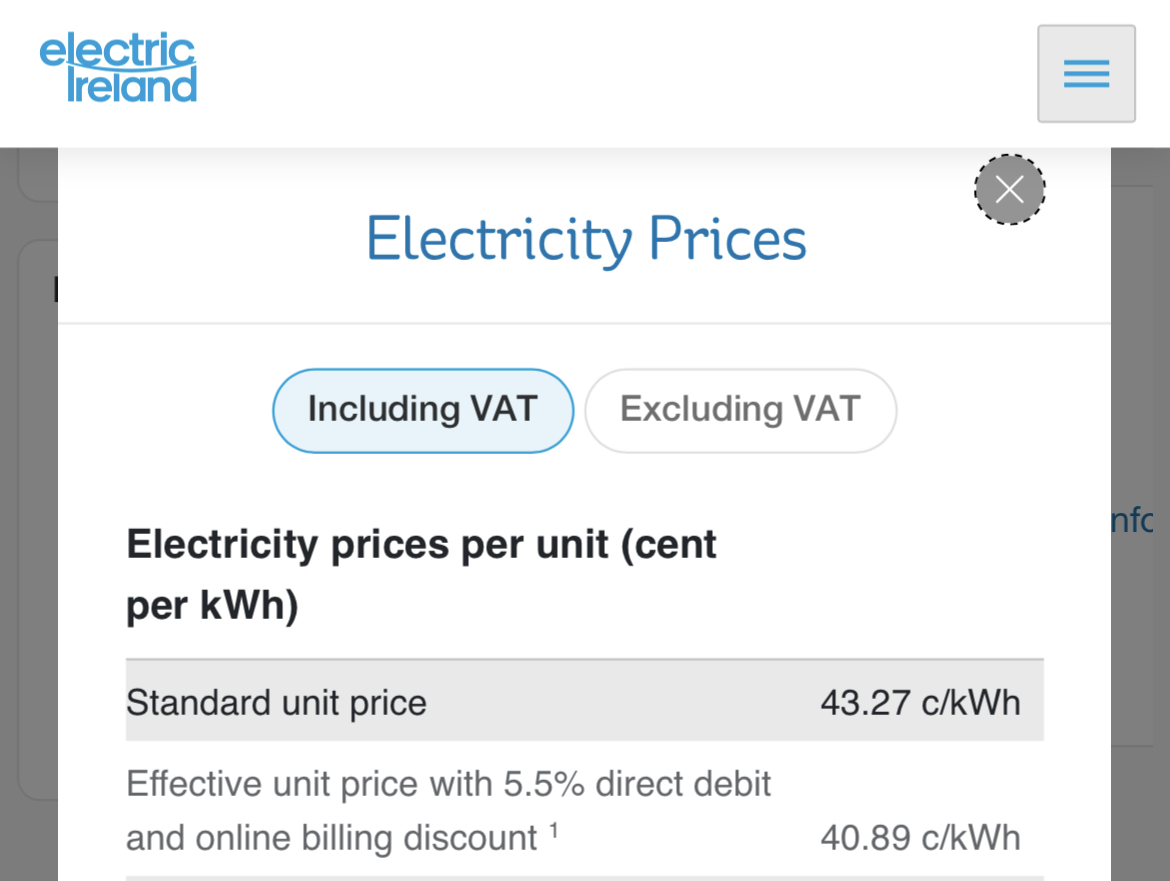
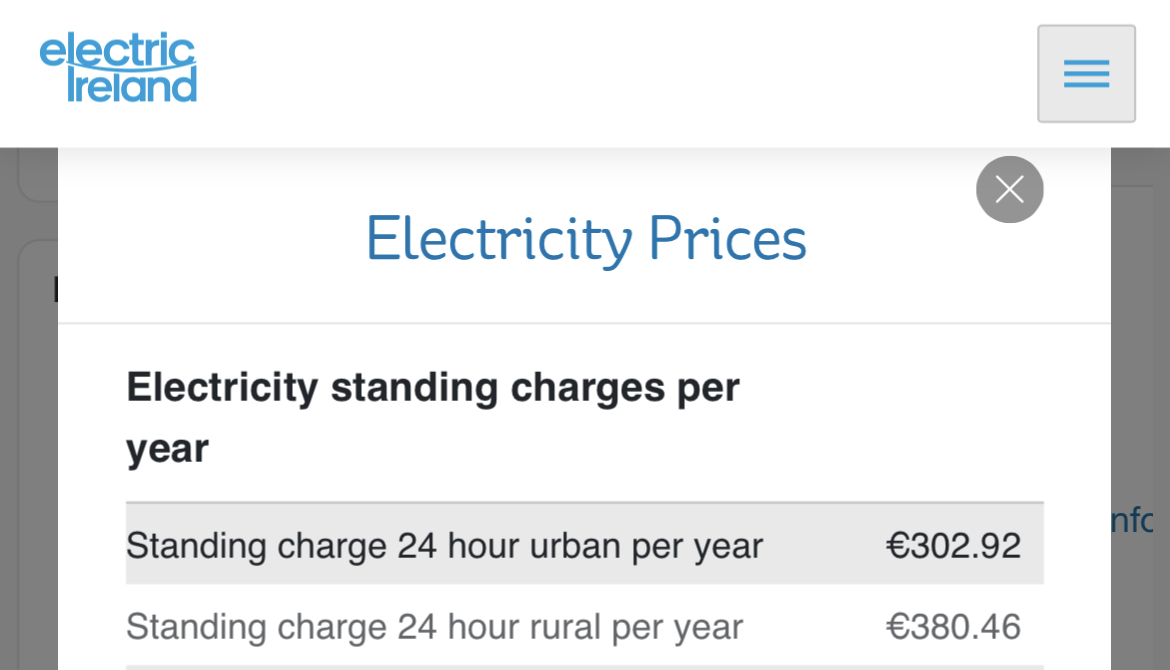
Converting from euros to sterling, the Irish unit rate for electricity is 35p/kWh. Standing charges are £260 per annum for urban households and £326 per annum for rural households. (Side note: higher standing charges in rural areas - a perennial SNP grievance - have nothing whatsoever to do with independence.)
How do those prices compare with the situation in Scotland? Here are the prices under the current Ofgem price cap, and the new cap which will apply from 1st October 2023:5https://commonslibrary.parliament.uk/research-briefings/cbp-9714/
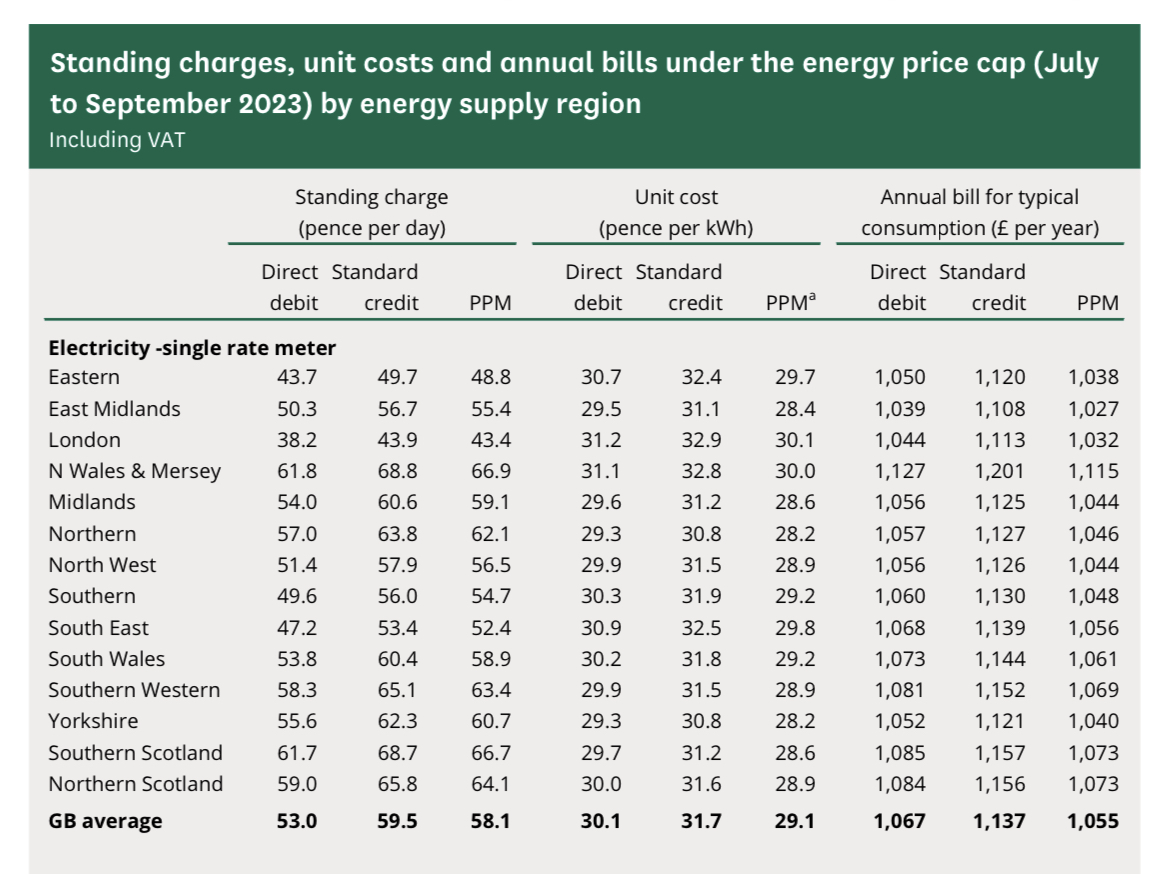
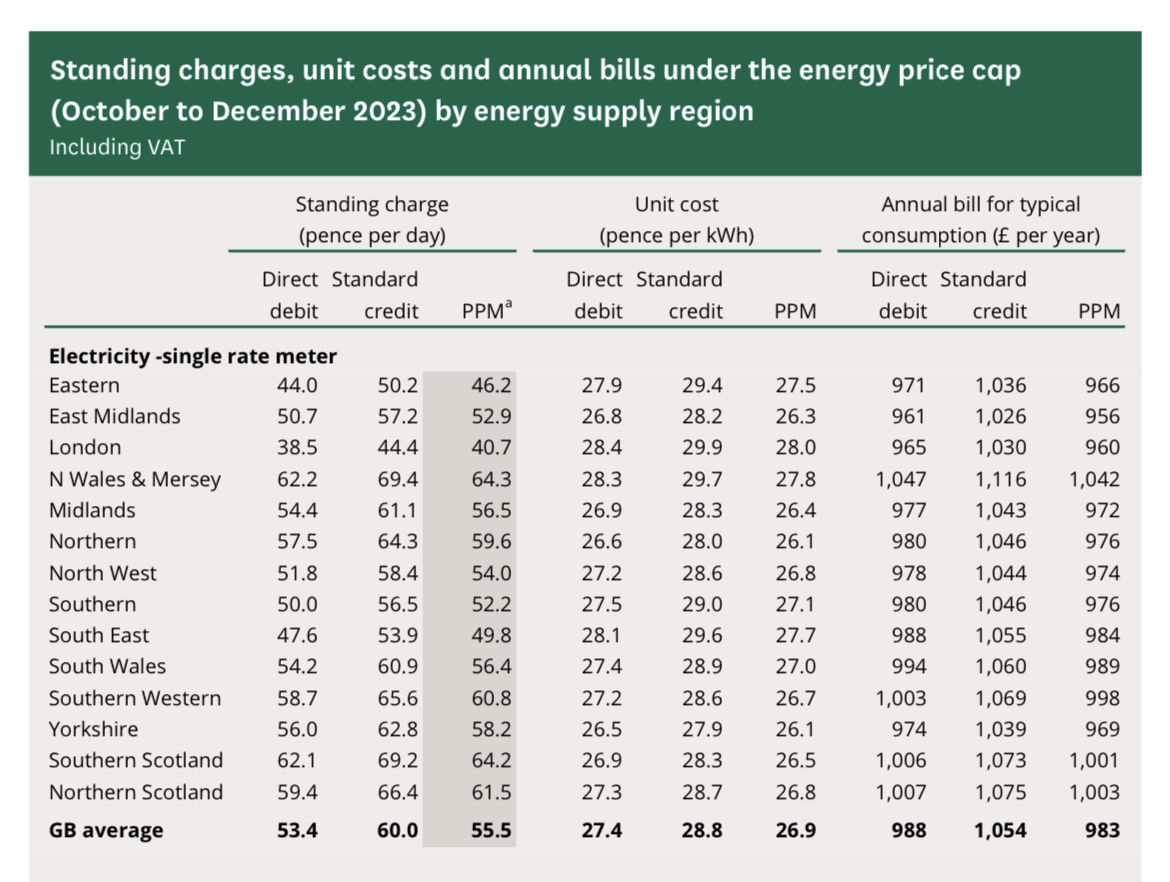
Households in Scotland currently pay a unit rate for electricity of 30p/kWh, which will fall to 27p/kWh from October. (Another side note: notice that unit rates - by far the most significant factor in total bills - are below the GB average in both North and South Scotland.)
And the average standing charge in Scotland will be 61p/day from October, which equates to £222 per annum.
So Irish households are paying materially higher prices for electricity - in unit rates and standing charges - than households in Scotland. And they are paying those prices to a state-owned energy company, so this has nothing to do with corporate greed.
Perhaps things will look different in Denmark? It does have more renewables than Ireland. In 2022 Denmark met 55% of electricity demand from wind, and just 15% from fossil fuels - the equivalent figures for Scotland are almost exactly the same.
Without speaking Danish it’s tricky to navigate currently available tariffs. But the Danish Government’s statistics agency publishes useful historic data in English:6https://www.dst.dk/en/Statistik/emner/miljoe-og-energi/energiforbrug-og-energipriser/energipriser
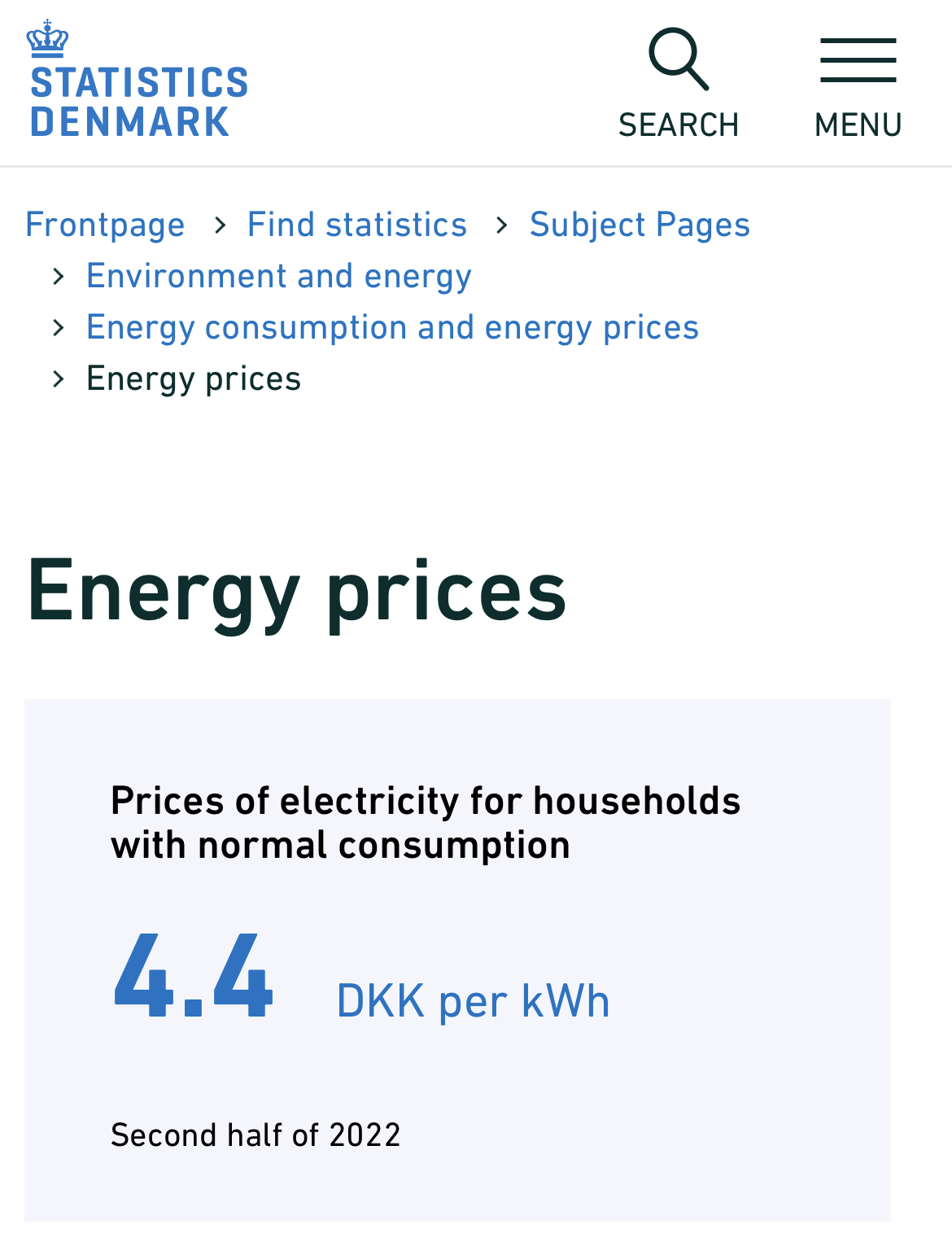
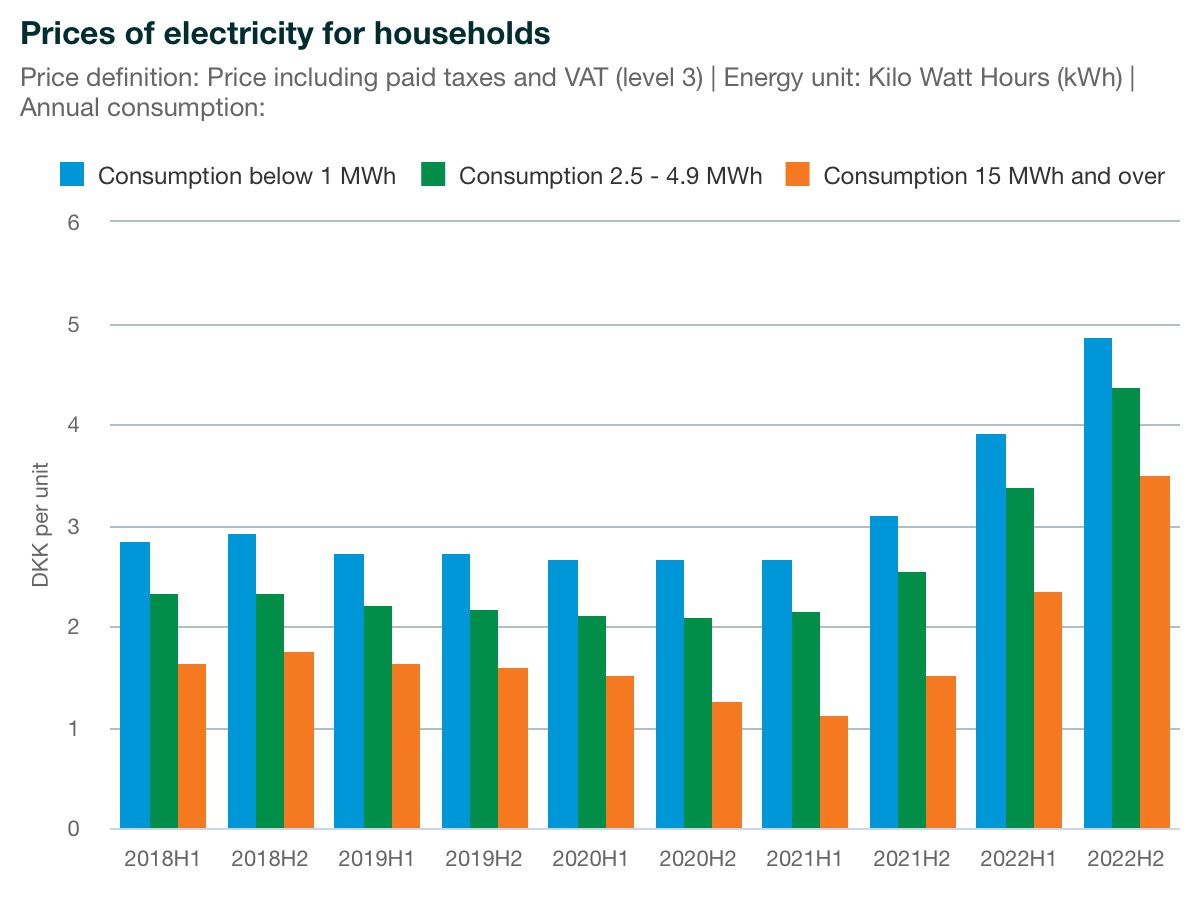
In the second half of 2022, Danish households with “normal consumption” (2,500 - 4,900 kWh/annum) were paying 4.4 DKK/kWh.
Converting to sterling at the average exchange rate of 8.62 GBP/DKK for the second half of 20227https://www.investing.com/currencies/gbp-dkk-historical-data, that is 51p/kWh. This is an “all in” price, incorporating fixed and variable components. So it would be unfair to compare it with UK unit rates, which do not include the fixed rate standing charge.
The table below details the tariffs under the UK Government’s Energy Price Guarantee, which came into force on 1st October 2022.8https://commonslibrary.parliament.uk/research-briefings/cbp-9642/
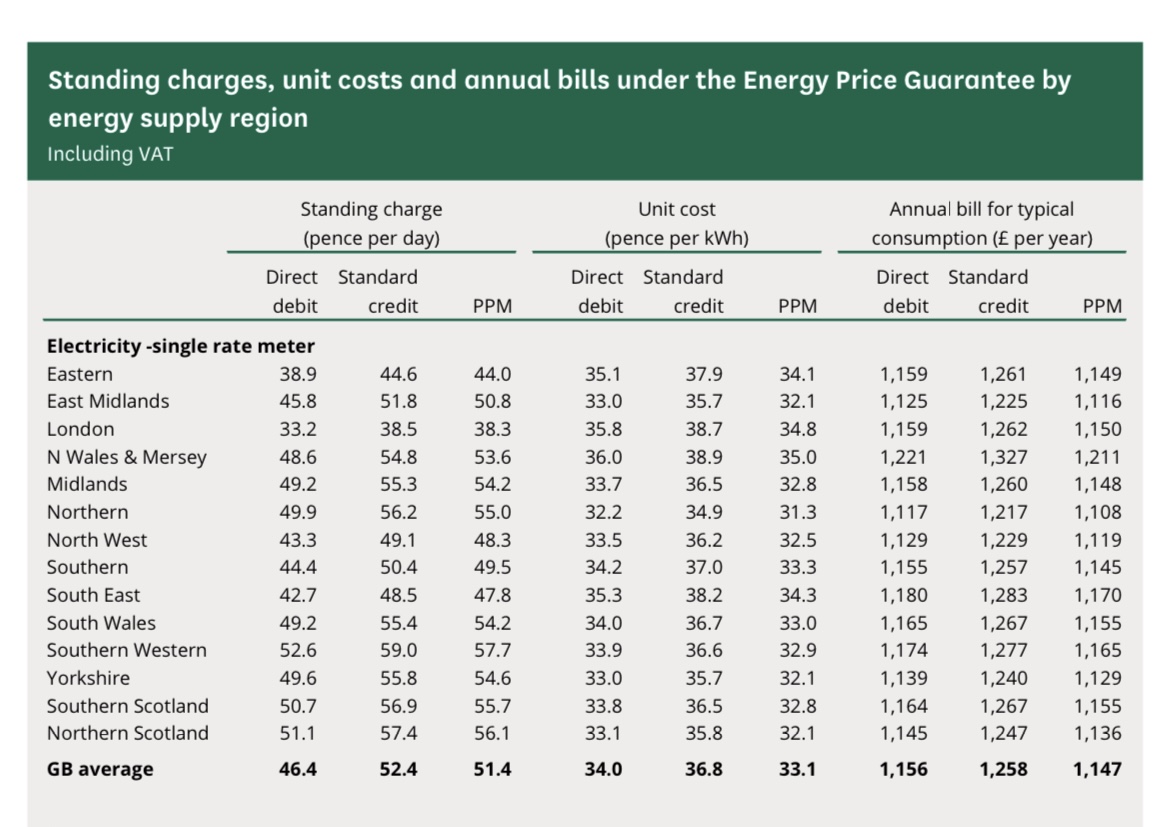
The average unit rate in Scotland was about 33p/kWh and the average standing charge 51p/day.
Based on typical consumption of 2,900kWh, this meant a total blended rate of 40p/kWh.
The same exercise for the tariff which applied from July - September 20229https://www.ofgem.gov.uk/publications/default-tariff-cap-level-1-april-2022-30-september-2022 yields a blended rate of 34p/kWh.
So the average blended rate in Scotland during the second half of 2022 was 37p/kWh.
Danish households were therefore paying very substantially higher prices for electricity than households in Scotland during the second half of 2022.
The two nations which the SNP most often suggests Scotland would transmute into with independence have higher electricity prices than Scotland has inside the UK.
Of course there are nations with lower electricity prices than the UK. Norway and France are good examples.
Norway has lower prices because its unusual geography means 90% of electricity demand can be met from hydroelectric power. In Scotland, less than 10% of electricity consumption is from hydro.
France has lower electricity prices because its generation mix is overwhelmingly nuclear. Over many decades, France’s state-controlled energy company has constructed a huge fleet of nuclear power stations. These provide non-intermittent power at costs undisturbed by fluctuations in the price of gas. In Scotland, the SNP is implacably opposed to nuclear power.
Scotland is not going to sprout Norwegian style fjords or suddenly acquire a vast fleet of nuclear power stations simply by becoming independent.
And this is the nub of the matter: energy bills in an independent Scotland would be impacted by just the same factors as they are today. But an independent Scottish Government would be far more fiscally constrained than the UK Government.
The mitigations implemented by the UK Government over the last couple of years would almost certainly have been unaffordable in an independent Scotland, meaning higher bills for Scottish households.
Humza Yousaf’s killer argument for independence - that high energy bills in Scotland are “entirely linked to the fact that we are not independent” - collapses under the slightest amount of scrutiny.
Please log in to create your comment